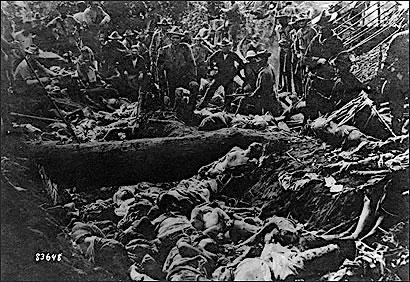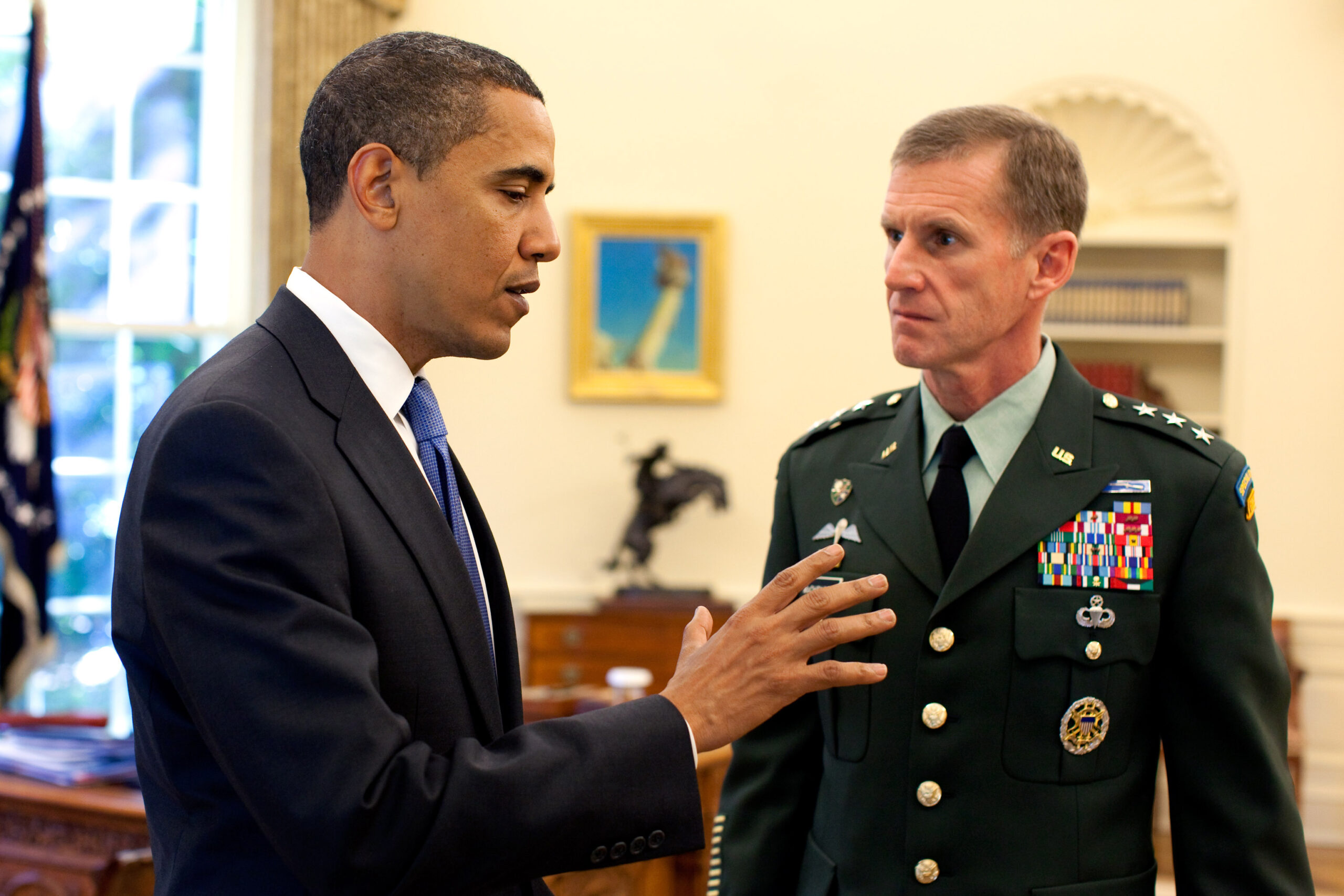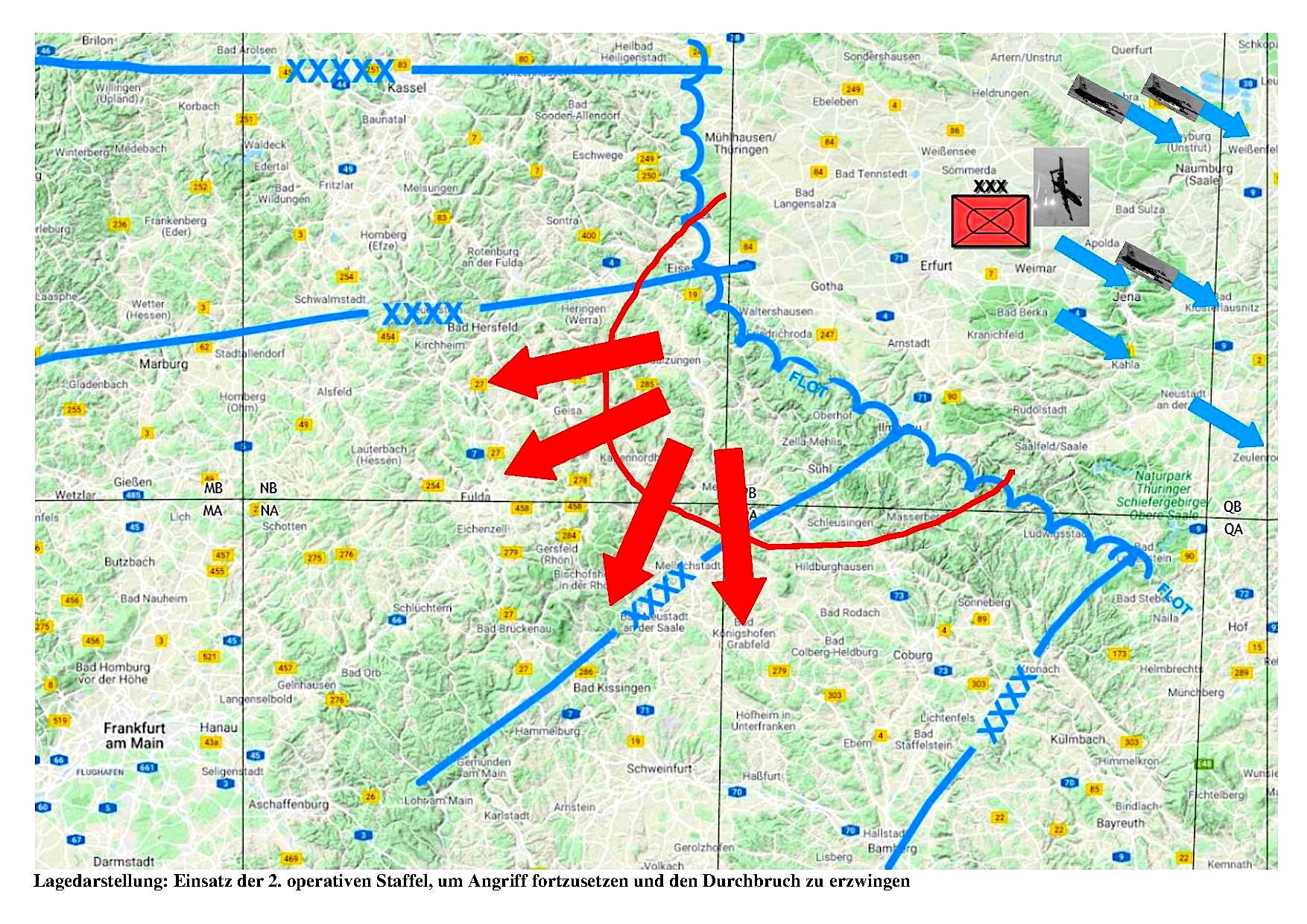Erasure or sublimation of memory makes it easier to shape the present by controlling or editing history. Doing so preserves a mythic version of a country’s identity, postulates Michael Brenner.
 Fame is fleeting. We may be a Facebook celebrity today with ‘likes’ in the six digits, only to find as time goes by that the balance is shifting daily as we fade into the oblivion from which we emerged. Pretty much the same phenomenon is discernible in regard to the attention paid historical events. Images blur, and then most slip out of consciousness. It seems especially pronounced these days.
Fame is fleeting. We may be a Facebook celebrity today with ‘likes’ in the six digits, only to find as time goes by that the balance is shifting daily as we fade into the oblivion from which we emerged. Pretty much the same phenomenon is discernible in regard to the attention paid historical events. Images blur, and then most slip out of consciousness. It seems especially pronounced these days.
Forgetfulness, whether due to a studied attempt to repress the past or the kicking-in of self-defense instincts on a mass scale, reminds us of George Orwell’s “memory hole’ in 1984.
As Orwell understood when he created the “memory hole” concept, the erasure or sublimation of memory makes it easier to shape the present by controlling or editing history. Doing so also serves to preserve a mythic version of a country’s identity.
Most broadly, a memory hole is any psychological mechanism for the alteration or disappearance of inconvenient or embarrassing past events. Orwell’s Ministry of Truth made sure that its manipulations were complete and irreversible. What we experience today is something less draconian and directed. Memories do survive, but they usually are vague and distorted. They are prone to be blended into benign fables.
These thoughts about the transitory nature of things arose while perusing a collection of old clippings. Let’s consider some of them.
- Quemoy & Matsu. For those experiencing the effects of early onset Alzheimer’s, they are two tiny islands lying just off the coast of China but occupied by the Nationalists ensconced on Taiwan under our protection. In the late 1950’s, they were a hot topic. The issue of whether and how to defend them figured prominently in the Kennedy-Nixon debates – right up there with the ‘missile gap’ (paranoid fiction) and Nixon’s 5 o’clock shadow. Pundits concluded that the debates, along with Richard Daley’s creative arithmetic in tabulating the Cook County vote, put JFK in the White House. At the time, there was widespread fear that the dispute could be the flashpoint for war with Beijing issuing 1,500 or so ‘final warnings’ that we had better turn them over to the People’s Republic of China (Taiwan) – or else. Mention the words Quemoy and Matsu these days, and the only response would be a request for the newly opened restaurant’s address.
Quemoy & Matsu yesterday; the Spratleys today?

Second of the four presidential debates held during the 1960 presidential election. This debate took place in Washington D.C. at NBC’s WRC-TV studios on October 7, 1960. Democrat John F. Kennedy is at left, Republican candidate Richard M. Nixon is at right. (GPA Archives/Wikimedia Commons)
- Crucial breakthroughs in anti-submarine technology – by the Soviets. As the “balance-of-terror” became institutionalized with the appurtenances of Mutual Assured Destruction, mental space opened for a fresh source of worry. Since the Pentagon & friends cannot tolerate a threat vacuum, anonymous reports started to appear which noted with alarm that the critical pillar of the deterrent triad composed of nuclear submarines carrying MIRVed missiles was in danger of being menaced by the Russkies’ development of diabolically capable attack submarines.The Cassandras claimed that their deployments gave Moscow an incentive to launch a first strike at a time of crisis. This was, and is, fatuous nonsense. There is no way to neutralize either side’s overwhelming retaliatory capabilities. Even degrading a portion of them would be of no strategic significance. The United States’ Single Integrated Operational Plan (SIOP) assigned 60 warheads to the Moscow target alone. If by some stretch of the technological imagination they were reduced to 35 or so, that hardly could tempt Vladimir Putin and his colleagues to reach for the button (or, at least, the Red Phone) in the belief that they now had the upper hand in a nuclear showdown. The madness more properly is to be found among those who purport to take such Halloween fantasies seriously.
Outcome? Nothing consequential. Sober analysis showed that the risk was inflated, our 20,000+ warhead arsenal was kept intact, and then the USSR disappeared from the strategic map. Now, of course, Putin is taken to be the avatar of Khrushchev, Russia’s hypersonic missiles are reason/excuse to accelerate our own $1 trillion upgrade, and nobody talks about submarine launched ballistic missiles (SLBM) or Anti-Submarine Warfare (ASW) – much less their fanciful vulnerability to Moscow’s ‘Project Nemo.’
In order to get the pulse of Washington racing, it is far more effective to point with alarm at the Kremlin’s alleged diabolical plot to weaken America by stirring division among its otherwise harmonious and contented populace.
(Given the inutility of nuclear weapons for performing the classic functions of arms, the best course to take is to park them in place and then ignore them. The second best, for a paranoid leader who actually worries about any enemy first strike, is to take the first step but to announce publicly a commitment to a launch-on-warning strategy – a tripwire that guarantees mutual destruction. Whatever doubts the postulated opposition might have as to whether you really mean it, he would be dissuaded by a simple calculation of the odds on getting it wrong multiplied by the infinite negative consequences.
The odd thing about nuclear strategy is that the two elements that make deterrence work are 1) an automaticity of retaliation – certainty; and 2) the perils of misjudging what plans the other side has in place given the intolerable consequences of getting it wrong – uncertainty).
- Fulda Gap. For decades, anyone with the slightest claim to expertise about national security and NATO was on intimate terms with the ‘Fulda gap.’ It refers to that portion of the North German plain that represented the shortest route for the Red Army to take on its way to the Channel.The term can have a strategic as well as a territorial definition. For the ‘gap’ also was the dividing line between the bulk of the American forces in Germany, who were deployed south of it, and the allied forces deployed mainly to the north of it. Hence, double vulnerability. Nightmare visions of 40 Soviet armored divisions pouring through the Fulda gap spawned several innovative ‘solutions.’They included the deployment of thousands of tactical nuclear weapons (TNWs) in Western Europe available to staunch an otherwise irresistible Soviet advance against overwhelmingly outnumbered, conventionally armed NATO troops. That was a Kennedy/McNamara initiative. The TNWs were deployed; some are still in place. Fortunately, the notion that this first-use resort to n-weapons could be operationalized without setting off massive strategic exchanges was never tested. Of course, we now know that the Kremlin never contemplated such a suicidal assault – as did a few sane heads in the U.S. back then.
Little has been learned, though. These days, the Pentagon and NATO routinely sound the alarm that Putin’s truncated Russia poses a similar threat – despite the loss of all its Warsaw Pact allies and its Eastern European bases, despite NATO’s advance deployments to the Russian borders with Poland and the Baltics, and despite the inconvenient geographical fact that Russia’s modest army is 1,000 kilometers farther away from the Fulda gap.
Moreover, there is no conceivable motive for such a crackpot move. For Russians to reach the Fulda Gap these days, they depend on tour coaches. Nobody uses that term ‘Fulda Gap’ in Washington. It’s too awkward for our war planners, but the mentality survives and thrives. History can repeat itself: first as drama, then as farce.
- Fantasy Provocations. In 1846, many an American eyed enviously the Mexican territories north and west of the Rio Grande and Baja. Texans, who were still digesting the large morsel of real estate they had torn from Santa Ana – 750,000 square miles of prairie – out of pure greed were among them to gain ‘strategic depth’ I suppose.President James Polk, egged on by other hawkish empire-builders among the country’s political elite, was gung-ho for conquest. He was just looking for an excuse. There being none: he fabricated one. After Texas’ accession to the Union, a crisis was created by the Texans’ demand that the border be moved south from the Nueces River to the Rio Grande (lebensraum). When Mexican President José de Herrera balked, Polk ordered General (and later President) Zachary Taylor to invade the disputed zone. Months later, the Mexicans dared to defend their land. Polk raged that Mexico had “invaded our territory and shed American blood on American soil” – and sent to Congress an already drafted declaration of war.
Public opinion was divided (among the vocal opponents was Congressman Abraham Lincoln), but the motto Manifest Destiny and the willful Washington government triumphed. The U.S. invaded Mexico, defeated them, occupied Mexico City and forced them to hand over the vast territory that ran to the Pacific. Probably the biggest land grab in history. Hence, Hollywood, Santa Fe, and Las Vegas.
In 1898, a vigorous America, feeling its oats, began flexing its muscles – in Central America, in the Caribbean, in the Pacific Basin. William McKinley was president. Expansionists fixed a covetous eye on the residual Spanish possessions of Cuba, Puerto Rico and – farther afield – the Philippine Islands. Spain was a decaying state whose tattered bits of empire scattered around the globe it could not defend. All the United States needed to take them over was an excuse. As in 1846, they manufactured one.
Many Americans still “Remember the Maine” – the U.S. flagged ship that blew up in Havana Harbor. The U.S. accused the colonial authorities there of deliberately destroying the ship. There was no plausible reason for them to do so, no more than there was reason to believe that Saddam Hussein was behind 9/11 or the aluminum tubes were the crucial ingredients of his non-existence nuclear weapons program. But it wasn’t reason that prevailed. Historians have established beyond a doubt that the Maine was sunk by an explosion that was caused by a spontaneous combustion of grain stored in its hull.
The outcome of the Spanish-American War was that the U.S. got the dubious places it prized, suppressed a six-year Filipino resistance to U.S. occupation that left about 400,000 ‘natives’ dead and devastated the country, and Teddy Roosevelt rode his fame as leader of the ‘Rough Riders’ into the White House. Forty years later, the U.S. gone from the Philippines.

U.S. soldiers pose with Filipino Moro dead after the first battle of Bud Dajo, March 7, 1906, Jolo, Philippines. (Wikimedia Commons)
- In 1958, we embarked on an uncannily similar performance in Indochina. That gruesome story has many chapters, punctuated in the end by humiliation and failure. The most notable repeat element was the artful fabrication of an incident that was exploited as an excuse for war: the infamous Tonkin Gulf encounter.The short version is simple. Senior Washington officials, led by Defense Secretary Robert McNamara and National Security Advisor McGeorge Bundy, were pressing very hard for a massive escalation of the American military intervention. JFK resisted the pressure and documentary evidence now suggests that he indeed reached the tentative conclusion to begin a withdrawal after the 1964 election. LBJ was also hesitant, but more ambivalent and in a weaker political position. McNamara and Bundy in fact sent Johnson a written ultimatum: either take the measures we are advocating or we will denounce you as a weakling on national security during the upcoming campaign. It was a proposal that he could not refuse. So, the hunt for an excuse that would sway public opinion and justify a major war in Asia was on.
It was found in a naval incident off the coast of North Vietnam. The official story was that an American vessel had been fired on by a Vietnamese gunboat. That was beefed-up as the casus belli for the disproportionate American retaliation which produced millions of casualties (most civilian) in all of Vietnam, Laos, Cambodia and among American forces (58,000 killed). The rest is a matter of record.
So, keep a gimlet eye on the Persian Gulf
50 Metrics
In November-December 2009, President Barack Obama found himself in a dilemma. It was the failure of the American project to foster a friendly, democratic Afghanistan. The enormous investment of military forces, cash and political advice had not paid the expected dividends. The Kabul government was incompetent, corrupt and riddled by warlord rivalry. The Taliban insurgency, spurred back to life by the ham-handed occupation, was thriving. The counter-insurgency was stymied in a stalemate. Obama’s instincts pointed him towards a lowering of the United States’ profile in acceptance that our goals were unreachable. However, no one in the administration’s national security team shared this sentiment – except for Vice-President Joe Biden.
Under the guidance of Secretary of Defense Robert Gates, the resisters formed a cabal to prevent Obama from acting on his instincts. It included Chairman of the Joint Chiefs Mike Mullin, CIA Director David Petraeus, the newly appointed commander in Afghanistan Stanley McCrystal and Secretary of State Hillary Clinton. She was selected to act as the ‘frontman’ for political reasons that included her personal standing with the President.

Obama, at left, with Lt. Gen. Stanley McChrystal, then new U.S. commander for Afghanistan, May 19, 2009. (White House, Pete Souza)
They pressed hard for a different strategy that entailed an expansion of the residual reduced force in country by some 35,000 and a doubling down on U.S. commitment to pre-existing objectives. Obama set aside his misgivings and yielded to the pressure. To cover himself, he took three exceptional steps.
One, he lowered the size of the escalation. Two, he composed an elaborate, quasi-legal document that spelled out the terms and conditions of the strategy. It stipulated the sequence of actions and set deadlines. All of the main protagonists were obliged to sign what was a strange sort of pre-nuptial contract. Finally, Obama included 50 metrics by which to measure progress/success in the strategy’s implementation.
That was done in order to avoid the fudging of future assessments and serve as benchmarks for later decisions. The punditry and the media made much of the 50 metrics, which were broadly viewed as a sign of the president’s diligence and rigorous, lawyerly mind. That lasted for about 10 days. The metrics never again were to be mentioned in any public setting – or, as far as we know – in any private setting either.
Eleven years and three administrations later, the war goes on. Donald Trump talked about a withdrawal – sort of. The U.S. is still there. Desultory ‘peace’ talks between the Taliban and the debile Kabul government (complicated by the intrusion of ISIS fighters) meander. So, we are back to Richard Holbrooke’s definition of success: “We’ll know it when we see it.”
For the Pentagon, ‘success’ is primarily a matter of ensuring that history doesn’t place an ‘L’ in the U.S. military’s record book. For Biden and the other politicos, success is not losing any votes because of what you did or didn’t do in Afghanistan. Why worry about the great games of geo-politics? After all, Afghanistan has no strategic importance whatsoever.
As for terrorism, the Taliban had broken with al-Qaeda several years earlier and, anyway, there were dozens of other places where an attack could be organized; 9/11 was planned in Hamburg and directed from New Jersey. The Taliban themselves have never killed a single American outside of Afghanistan/Pakistan.
Digits and statistics and equations and algorithms are the last (or first) refuge of somebody either trying to pull the wool over your eyes – or really not knowing the subject he is talking about – or both.
The JPOA Deal With Iran
Within hours of signing the historic, laboriously constructed agreement, President Obama said this:
“With respect to Iran, it is a great civilization, but it also has an authoritarian theocracy in charge that is anti-American, anti-Israeli, anti-Semitic, sponsors terrorism, and there are a whole host of real profound differences that we [have with] them … “
Obama was echoed by Secretary of State John Kerry:
“Through these steps and others, we will maintain international pressure on Iran. United States sanctions imposed because of Tehran’s support for terrorism and its human rights record – those will remain in place, as will our sanctions aimed at preventing the proliferation of ballistic missiles and transfer of conventional arms. The UN Security Council prohibitions on shipping weapons to Hizballah, the Shiite militias in Iraq, the Houthi rebels in Yemen – all of those will remain as well…..
Have no doubt. The United States will oppose Iran’s destabilizing policies with every national security tool available. And disregard the myth. The Iran agreement is based on proof, not trust. And in a letter that I am sending to all the members of Congress today, I make clear the Administration’s willingness to work with them on legislation to address shared concerns about regional security consistent with the agreement that we have worked out with our international partners.”
This depiction of Iran has had profound effects. First, it closed off the possibility of pursuing a wider détente that could permit diplomatic resolution of outstanding regional conflicts. Second, this characterization was grist for the mill for all those opposed to any normalization of relations between Washington and Tehran. Thereby, it created political circumstances that encouraged Trump’s withdrawal from the treaty, and now is leading President Biden to take a hardline approach to a restoration of our participation. By insisting on the same, unacceptable preconditions that his predecessor demanded, Biden in effect is following the course laid down by Trump.
A Disabled Foreign Policy
American foreign policy suffers from two matching disabilities. One is segmentation: the disregard of (or caricatured) context whereby each item on the bilateral diplomatic menu is addressed without regard to overall diet. (Example: Biden’s starting to deal with Xi by raising narrow commercial issues; or with Putin by imposing new sanctions because of Navalny-focused domestic politics – of which his administration happens to have a limited, badly warped understanding).
The other is to place countries in crisp categories of friend/ally or enemy, and thereby to extend blank checks to the former and to treat the others as irredeemable threats. (Example: Israel/Saudi Arabia/now India vs Russia/China/Iran/Venezuela/Cuba). The consequences are stereotypical imaging and policies that do not correspond with realities.
Why Memory?
Each of these episodes in collective forgetfulness has its singular features, as do the lessons to be drawn from them. If we were to indulge ourselves in generalization, they could be summarized like this:
- The erasure or blurring of past events is common and easily accomplished
- Doing so often is a matter of political convenience
- The lessons we draw from them are normally self-serving, selective and partial
- Retrieving with accuracy memories of those past events is technically quite simple; psychologically, it takes great willpower
- The failure of collective memory can exact a very heavy penalty
Postscript: Voting
In 1840, about 80 percent of eligible voters went to the polls to cast their ballots for President. Turnout hovered around that number until 1900, the high being 1880 when it rose to 82 percent. (By 1840, there was universal suffrage for free male citizens). That was before electronic communications, before railroads, before the demographic shift to high density urban centers, before paved roads, before mail-in ballots, before early voting.
In 2000, we hit the all-time low of 52 percent. It since has risen to last year’s (roughly) 65 percent. Matching trends have been registered in off-year elections and state elections. Despite all the talk of voting access and its vital importance for the vibrancy of American democracy, that decline is almost never mentioned. No conclusions or implications, therefore, are drawn. Yet, voting is the keystone of constitutional democracy. The principles of representation and accountability suffer greatly when very large numbers of people abstain.
The obvious implication is that our democracy is not vital, it is not robust, it is not healthy. It is debilitated. Serious concern about the resilience and viability of our political institutions should begin with an examination of this phenomenon. Once again, history is ignored to our detriment.
Michael Brenner is a professor of international affairs at the University of Pittsburgh. mbren@pitt.edu
The views expressed are solely those of the author and may or may not reflect those of Consortium News.




While an interesting article (a bit weird to move from memory hole to nuclear war to Afghanistan to voting?), there are a few disagreements.
Biden is hardly a Man of Peace, although very protective of his sons and their service (Beau spent a year in the MidEast). His often cited opposition to the Obama Surge came down to petty differences between Biden and McChrystal. McChrystal claimed he needed 30,000 more troops in Afghanistan, Biden claimed 10,oo0 would be sufficient, Obama sent about 20,000. McChrystal was fired for mocking Biden in 2010, but endorsed him over Trump in 2020. Pique more motivation than peace.
Robert Scheer interviewed candidate George Bush in 1980 who stated that nuclear war was winnable. Although seldom voiced, that view persists among our elite Establishment politicians.
Also in Orwell’s “1984”
“Who controls the past controls the future. Who controls the present controls the past.”
Yep, United States of Amnesia…
Not voting is a vote. It is a vote for “none of the above” and/or “you are all liars.”
It is a vote of no confidence.
I wonder what beliefs we cling to today are headed for the memory hole? By past experience, it will be the very things we cling to today with the greatest intensity, like that our votes matter these days.
Precisely. I go to the polls so friends and family cannot accuse me of being un-American or a shirker of some sacred responsibility, and last year during the pandemic I voted by mail, but I leave unmarked most of the ballot as my way of saying to both major parties: I do not have to accept the incompetent, even dangerous, candidates you are yet again forcing down our throats. Neither party deserves a vote when the primaries are conspicuously rigged and no one, not the media, the party hierarchies, the voting public or the candidates themselves, seems to care. I’ve considered voting for the candidates of the various and sundry “third parties” that randomly pop up on the ballot, but since I usually know little or nothing about them I consider it dishonest to vote for them. Plus they have absolutely no chance of winning. So, I’d rather my null vote be considered what you call a “vote of no confidence.” Unfortunately, I never see the media report such votes in the data analyses.
An interesting piece Mr. Brenner. My thinking is more like Caitlin Johnstone’s regarding narrative management. The instances you relate show that it was “the moment” that was being served in all instances. The memory hole does serve as the repository for inconvenient truths, or rather the preponderance of such truths, and only allows the light of day to that which serves the ongoing narrative managed mythos.
I disagree though on one point: Afghanistan does in fact have strategic value. Close enough to China to be exploited and developed by same for all of its precious and ordinary metals, through a simple (eventual) extension of its BRI. This remains out of reach for the US though, regardless of holding geopolitical sway there, because Afghanistan is landlocked. Insurmountable for the US but within a reasonable grasp for China. So the US will stay there to perform the function of denial. Until, that is, the industrial development rewards (globalist investment) outweigh the militarist instincts.
Actually China borders Afghanistan. The US has no more reason to interfere in Afghanistan than China or Russia have to interfere in Mexico or Canada. China would be much more likely to bring about trade and exploitation of the minerals there with mutual benefits to both countries. Since Zbigniew Kazimierz Brzezinski the US’s sole purpose in Afghanistan has been to build up terrorist organizations, such as Osama bin Laden’s Al-Qaeda, and the fundamentalist Taliban, to harass the region and keep the MICIMATT bogeymen and $$$$ rolling.